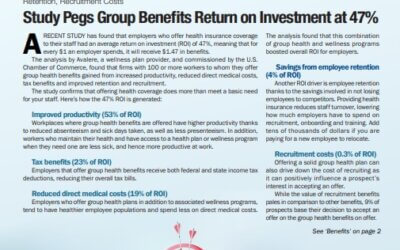As you will recall, the American Rescue Plan Act of 2021 (ARPA) includes a 100% COBRA subsidy for people who were laid off during the COVID-19 pandemic.
As part of the law, which took effect April 1, the Department of Labor was required to issue model notices that employers can use to send to eligible former employees.
The ARPA requires that employees laid off or who saw their hours cut during the pandemic to the point they no longer qualified for group health insurance, are eligible for COBRA continuation coverage that is 100% subsidized.
Model notices
The ARPA required the DOL to create three model notices (general, election and termination of the subsidy).
Employers are allowed to use their own notices as long as they satisfy the COBRA notice content requirements.
As with all model notices created by the DOL, employers will need to fill in the blanks for their own COBRA plan and can rely on the boilerplate verbiage to avoid running afoul of regulations. The DOL created four notices in total:
Model general ARPA COBRA notice — This form is to be provided to qualified beneficiaries who have a qualifying event (termination or reduction in hours) between April 1 and Sept. 30. You can download it here.
Model COBRA notice with extended election periods — This form is to be provided to individuals who may be eligible for the COBRA subsidy if they had a qualifying event that took place prior to April 1. You can download it here.
Model alternative notice — This form can be provided to individuals with insured coverage subject to state continuation coverage, who have a qualifying event between April 1 and Sept. 30. The form can be downloaded here.
Model notice of expiration of premium assistance subsidy — This form should be sent to individuals whose COBRA subsidy will end before Sept. 30. You can download it here.
Summary of major provisions and form
The DOL also released a document called the Summary of the COBRA Premium Assistance Provisions under the American Rescue Plan Act of 2021.
This four-page document is designed to be completed by the employer (or your COBRA plan administrator) and included with any COBRA assistance notice that is sent to an eligible terminated worker. The document includes a summary of the major provisions of the law pertaining to the 100% COBRA subsidy.
The employer must include the name of the COBRA administrator in this document. The document also contains a few pages that will allow a terminated employee to ask to be treated as an eligible beneficiary if the employer has not yet done so.
Once the completed forms have been returned, the employer will complete a section indicating if the request is approved or denied, and if denied, the reason for the denial.
The takeaway
You should review these model notices so you don’t run afoul of the law. You’ll want to make sure that you have sent notices to all of the eligible employees.
If you are using the model notices, ensure that you include all of the relevant information for your own plan.
If you are using your own notices, compare them to the model notices and review the guidance to make sure yours include all the content the forms are required to have.
The DOL notes in its FAQs that it considers the use of the model election notices to be in good-faith compliance with the law.

